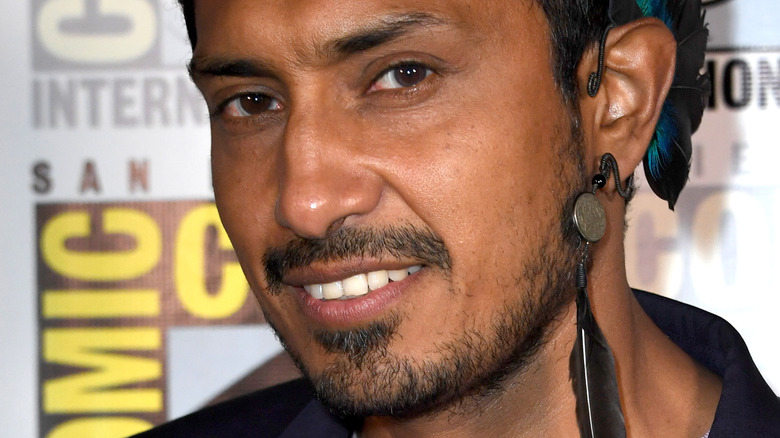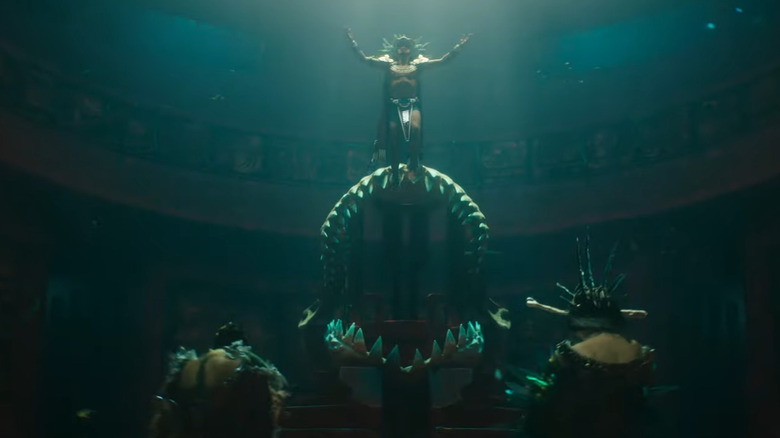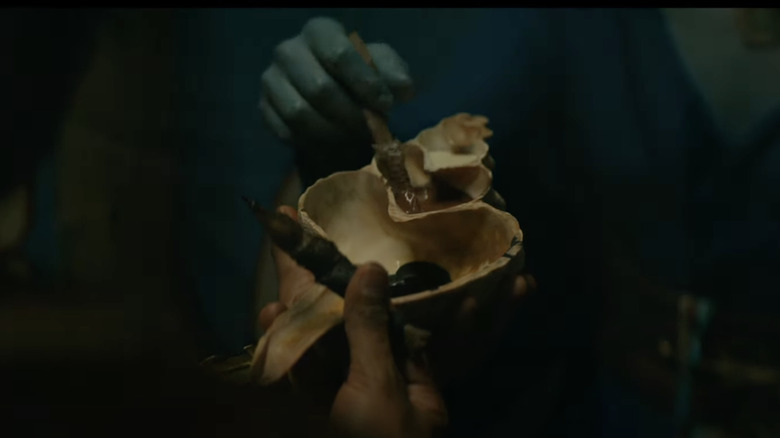Namor's Nickname In Black Panther: Wakanda Forever Explained
With the new trailer for "Black Panther: Wakanda Forever" just dropping, fans are excited to see actor Tenoch Huerta take on the role of Namor, the Sub-Mariner.
Namor, who was Marvel's first comic book superhero, has never appeared in live-action before, and his debut will come with a twist — namely, there will be a subtle change to his backstory. In the comics, he hails from Atlantis, but in the MCU, his home will be an underwater land known as Talocan. This is a great choice by Marvel Studios, which will prevent confusion for DCEU and MCU fans when it comes to the mention of Atlantis, which is also the home of Arthur Curry, aka Aquaman (Jason Momoa).
Talocan most likely is a reference to the Aztec paradise of Tlālōcān or Tlalocan, a level of the afterlife reserved for anyone dying a water-related death such as drowning or being struck by lightning (per Mythopedia). Tlalocan is ruled over by Tlaloc, the Aztec god of rain and thunder. The changing of the city of Namor's origin opens a lot of possibilities for Namor's character, and it may also explain the new nickname given to the character in the recently released trailer.
The call him K'uk'ulkan
In the aforementioned trailer for "Black Panther: Wakanda Forever," M'Baku (Winston Duke), leader of Wakanda's Jabari Tribe, says "His people do not call him general or king. They call him K'uk'ulkan, the feather serpent god" in reference to Namor. M'Baku suggests engaging Namor will lead to eternal war.
Kukulcan is, in fact, the name for a feathered serpent god in the mythologies of many cultures in Mesoamerica including the Aztecs, although his Aztec incarnation is better known as Ce Acatl Topiltzin Quetzalocóatl (per World History Encyclopedia). Quetzalocóatl is said to have been from Tollan, the capital of the Toltec civilization which were the predecessors to the Aztecs, and traveled east to bring important cultural innovations, vowing to one day return. While Kukulcan, aka Quetzalocóatla, and Tlaloc aren't technically the same god in Aztec mythology, Tlaloc is the god of rain and Kukulcan is known to be a bringer of rain. Therefore, the movie might be trying to fuse together the mythologies behind Tlaloc and Kukulcan. This could explain the character's ability to fly, which is somewhat of a mystery in the comics as neither of his parents possess that ability. It also explains the headdress the character has been seen wearing in images from the movie, such as on the cover of the November issue of Empire Magazine.
Black Panther: Wakanda Forever seems like it will embrace many aspects of Kukulcan
The movie seems to be bringing Aztec history and mythology into this sequel, possibly even providing as rich of a backstory as the first film gave to Wakanda itself. And since many cultures believed that Kukulcan was a sort of cultural savior destined to return to them, it's possible that even the people of Wakanda have foretold his coming.
Something interesting that also stands out in the trailer is when Namor paints a mural on the wall of a building that doesn't appear to be underwater. He uses a split conch shell to hold his paint, and it seems like this particular shell was chosen on purpose. The conch is an item often associated with Kukulcan (per World History Encyclopedia). A conch shell pectoral is also often seen on statues and images of Ehecatl, the wind god incarnation of Kukulcan.
There's a lot to speculate on until all the questions are answered when "Black Panther: Wakanda Forever" comes out on November 11.


